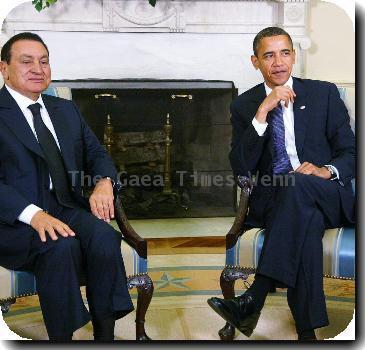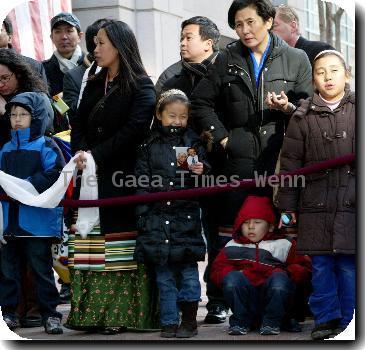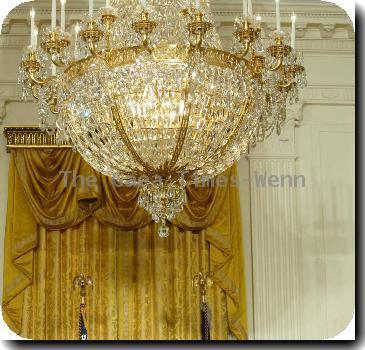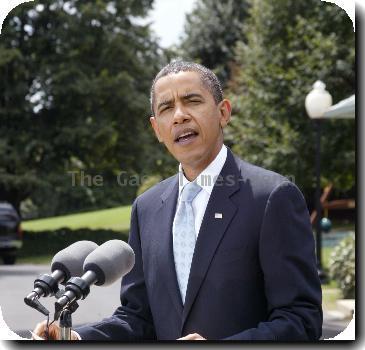From deck of warship, Iran’s supreme leader criticizes US military presence in Gulf
By Ali Akbar Dareini, APFriday, February 19, 2010
Iran’s supreme leader criticizes US military moves
TEHRAN, Iran — From the deck of Iran’s new guided-missile destroyer, Supreme Leader Ayatollah Ali Khamenei denied Friday that Tehran was seeking nuclear weapons and criticized the U.S. military presence in the Gulf.
His comments came as international concern rose over Tehran’s nuclear ambitions a day after the International Atomic Energy Agency said it may currently be working on making a nuclear warhead, suggesting for the first time that the Islamic Republic had either resumed such work or never stopped at the time U.S. intelligence thought it did.
Russia, which has been on the fence about whether to impose new U.N. sanctions against Iran, said it was “very alarmed” over Tehran’s failure to prove its nuclear program is peaceful.
Khamenei, who has the final say on all state matters, said his country was not developing nuclear weapons because Islam forbids weapons of mass destruction.
“Because of this reason, we don’t have any belief in the atomic bomb and don’t pursue it,” he said after taking a tour of the destroyer Jamaran, which was launched Friday at a Gulf port. State television, which broadcast the event, said the warship was the country’s first domestically built destroyer and a major technological leap for Iran’s naval industries.
Khamenei, who also is the commander in chief of Iran’s armed forces, said Washington was trying to frighten Iran’s Arab neighbors into buying U.S. weapons. He also said America and Israel were trying to sow divisions between Iran and Arab nations.
“The U.S. and the Zionist regime are trying to spread divisions to distract the attention of Islamic nations from the main enemies of the Islamic world, which are the U.S. and Israel,” Khamenei said in remarks broadcast on state TV.
Iran is weathering three sets of Security Council sanctions meant to punish its refusal to freeze its uranium enrichment program. It’s recent rejection of a plan meant to strip it of most of its enriched stockpile plus its belated acknowledgment that it had been secretly building a new enrichment facility has increased sentiment for a fourth set.
The U.S., Britain and France support such a measure, with Russia undecided and fellow permanent Security Council member China — which depends on Iran for much of its energy needs — opposed.
On Friday, France and Germany threatened to seek fresh sanctions in light of the new IAEA report, which was contrary to a U.S. intelligence assessment published three years ago that said Tehran appeared to have suspended such work in 2003.
“This report confirms with precision the international community’s very serious concerns,” French Foreign Ministry spokesman Bernard Valero said. “It shows how urgent it is to act with determination to respond to the absence of cooperation by Iran.”
Germany’s leading insurance companies — Munich Re AG and Allianz SE — also announced they would quit doing business in the Islamic republic after the International Atomic Energy Agency report.
Iran maintains its nuclear work is only for peaceful purposes like energy generation.
Khamenei, wearing clerical robes and a turban and walking with a cane as he inspected the ship, said the presence of foreign forces in the Persian Gulf “disturbs security” in the region but Washington will fail to achieve its goals.
U.S. military officials said last month that Washington was deploying upgraded Patriot missiles in Arab nations in the region and more U.S. Navy ships in the Persian Gulf capable of destroying missiles in flight.
The U.S. Navy’s 5th Fleet is also based in the Arab nation of Bahrain, just across the Gulf from Iran.
U.S. Secretary of State Hillary Rodham Clinton visited Qatar and Saudi Arabia this week to discuss Iran, warning that Tehran could set off a nuclear arms race in the Middle East if it chooses to develop atomic weapons.
The predominantly Sunni Arab Middle East — and Gulf nations in particular — have been wary of the growing influence of Shiite Iran, especially because of international suspicions that its nuclear program has a military dimension.
The 94-meter (308-foot) destroyer, which weighs 1,500 tons and has a helipad and modern radar, was launched in Bandar Abbas, a southern port city just at the Strait of Hormuz, a strategic point in the Gulf through which much of the world’s oil and other energy supplies pass.
The warship is equipped with anti-ship and surface-to-air missiles as well as torpedoes and naval cannons, state television said. Khamenei’s attendance was a sign of the significance that Iran attached to the event.
Iran has declared many such advances in its military industries and sciences to demonstrate self-sufficiency despite sanctions and attempts by the U.S. and its allies to isolate the country over its nuclear program.
The ship has a top speed of about 35 mph and can carry 120 to 140 personnel, state TV said, adding that a second destroyer is now under construction.
Associated Press writers George Frey in Frankfurt and Sophie Tetrel in Paris contributed to this report.
Tags: Barack Obama, Foreign Policy, Geography, Iran, Middle East, North America, Nuclear Weapons, Saudi Arabia, Tehran, United States, Weapons Of Mass Destruction



